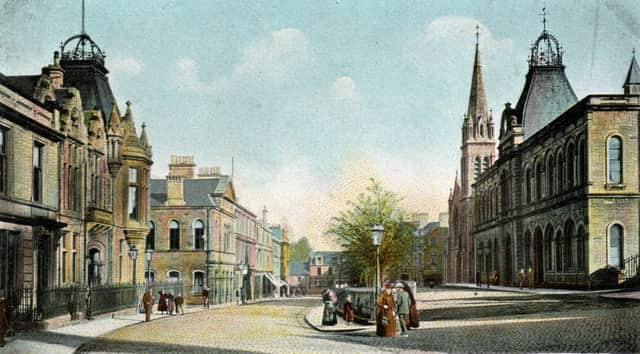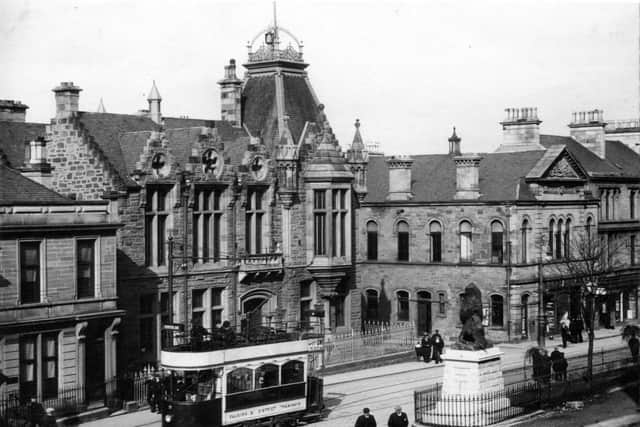Looking back on the historical buildings of Falkirk's Newmarket Street


I cannot remember a time when there were so many of these closures and diversions leading to long queues and frustrated drivers just trying to get on with their lives. It makes you wonder where all the money is coming from when we are told that local and national government is skint and we must all tighten our belts.
At least we will have Newmarket Street back and that is a blessing since it is the broadest, and many think the best, street in the burgh filled with buildings of historical interest which are beautiful in themselves and which tell part of the Falkirk story. The coloured photograph on this page was taken around 1900 and hand coloured for use as a postcard. Much of it remains the same today despite the passage of over 120 years. On the left hand side for example is the old Burgh Buildings opened in 1880 to house the Council. Its successor from 1966 bit the dust earlier this year but the handsome baronial style building with its crown survives and serves as the Registry Office. Its near neighbour across Glebe Street is the former Christian Institute building opened in the same year - it housed Falkirk’s first ever public library funded in part by Robert Dollar who made his fortune in America in timber and shipping. The rest of that side of the street retains some fine Victorian and Edwardian buildings including the one that housed the Nu Boulevard Café and, at the far end, the Salon Cinema, the poshest of the picture palaces in the town.
Advertisement
Hide AdAdvertisement
Hide AdUpper Newmarket Street across the road was home to one of Falkirk’s most popular buildings, the Town Hall, which bears a similar crown and is prominent in the picture. Opened in 1879 as a Town Hall and Corn Exchange it replaced an earlier building on the same site. Despite its popularity as a place for all kinds of community activities including sports, music, dancing, political rallies, prize-givings and drama festivals it lasted less than a century before the bulldozers moved arrived in 1968. I for one think Falkirk lost one of its biggest assets and most attractive buildings when it closed its doors. Next to the Town Hall was the Masonic Hall with the Falkirk Fire Station and beyond that in the picture the present St Andrew’s Church built in 1898 for the Free Church of Scotland then worshiping in an earlier building near Grahamston Station.


Lastly on the junction with Vicar Street is the fine baronial building built in 1864 for the National Bank of Scotland
There is no sign of the tram lines and overhead cables which arrived in 1905 nor of the South African War Memorial unveiled by Lord Roberts the following year. It marks the junction of the upper and lower street levels where the gas lamp stands in the main picture. At the far end of lower Newmarket Street, buildings block the way forward because, until 1933, there was no Princes Street and traffic had to turn left or right.
So far I haven’t seen the new “streetscape” but I’m hoping it enhances what is already there and that the area will remain the most attractive entry point to our town.